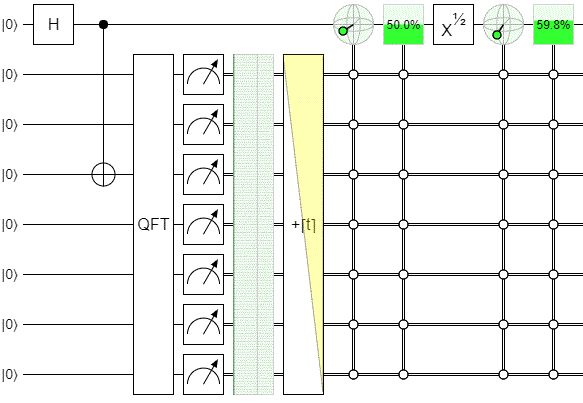The Elitzur-Vaidman bomb detector is a theoretical device that can detect whether photon-activated bombs are functional without detonating all of the test bombs by using quantum mechanics principles. It was proposed by Avshalom Elitzur and Lev Vaidman in 1993. This experiment can easily conduct practically by replacing the bombs with a detector and a path alternator that can bypass the detector and still keep the phase shift relevant according to the experiment requirements.
In the above diagram,
"t" indicates the time positions of the photon along the path after emission from the source. (times positions are indicated just for the convenience of the question asked) "MN" and "MB" are 100% reflectors, "BSS" and "BSD" are 50:50 beam splitters & "$D_1$" and "$D_2$" are narrow-band single-photon detectors while "B" is a photon-triggered hypothetical test bomb.
There are four possibilities:
- Photon is detected at $D_1$
- Photon is detected at $D_2$
- Photon is not detected at either $D_1$ or $D_2$
- Photon is detected at both $D_1$ or $D_2$
Now for this experiment, since the photon source is prepared in such a way that (nearly) only one photon is emitted at a time, "possibility 4" can (almost) only appear to happen due to background photonic noise which can be mostly filtered out (what little remaining can be disregarded) by carefully designing the experiment and choice of conditions. So only three possibilities left.
- If the bomb is a dud only situation 1 is possible.
- If the bomb is live there is a 50% chance of possibility 3 happening and
25% chance per each of possibilities 1 or 2 happening.
Question:
Does removing the bomb after t=5 but before t=16 affect the final detection results stated above?
In other words, is the probability of interference or no interference decided at each component at the speed of light on the fly or at the moment photon is at the last beam splitter where actual interference takes place or at the final moment of the photon at the detectors just before collapse or change of wave function?
I think the answer to the above would explain the nature of the quantum mechanical probabilistic wave. That is why I asked those questions about a possibly critical intervention in the experiment.




Best Answer
The photon interacting with the bomb acts as a collapse event, so at t=5 there is a 50% chance that it will explode.
Removal of the bomb after that interaction has occurred wont change anything about the experiment as the interaction between the photon and the bomb has already occurred.
Also the interference between the photons in the case of a dud or a true bomb doesnt change either as the photons have already interacted with the bomb after that point, and will continue to do that interference.